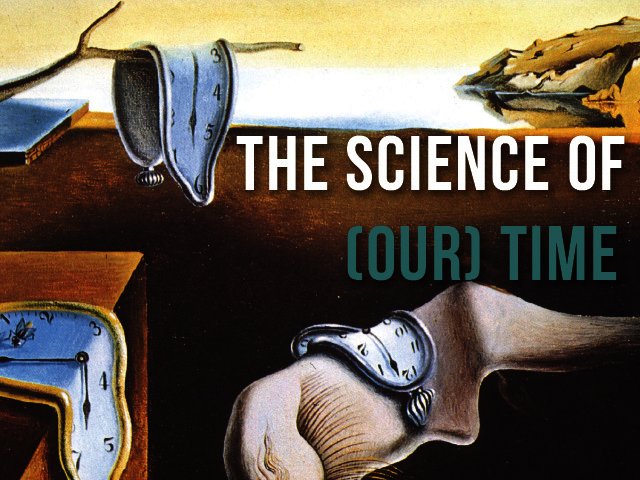The Science of (our) time
By Linda Pretorius 18 December 2014 | Categories: feature articles
At the start of the new year, it’s a good time to ponder, well, time. Linda Pretorius delves through the science behind it.
Tick tock
Atomic clocks keep the world ticking. In fact, without these accurate timing devices many of our navigation and communication systems would be quite useless. An atomic clock is based on the frequency with which electrons surrounding an atom’s core can jump from one energy level to the next and back again – like one full swing of a pendulum in a grandfather clock. Because this is such a constant value, we can measure time very accurately and reliably. At the moment a standard second is defined by the oscillation frequency of electrons in a cesium atom. But last year scientists also announced a strontium-based atomic clock, which they say is so precise that in five billion years – more than the age of the Earth – it would be out by only one second.
9 192 631 770: The number of ticks electrons in a cesium atom make in one second.
Source: National Physics Laboratory: www.npl.co.uk; http://1.usa.gov/1bk7jFK
(Un)happy hours
In a recent study, scientists found that we perceive different emotions to last different lengths of time. Of the 27 emotions they tested, sadness lasted longest, while episodes of shame, surprise, fear, irritation, and, strangely enough, boredom, were over in a flash. It seems that the duration of an emotion is linked to the amount of thinking and rethinking we do about the event that caused it. Typically, we don’t tend to mull over events that are insignificant to our general psychological wellbeing and therefore the associated emotions are short-lived. However, an event that threatens to greatly upset our state of mind warrants lots of thinking and rethinking, and so the associated emotion is perceived to last much longer.
233 High School Students: The participants in the study
Source: bit.ly/1uACOoS
Bed time
Living against your body clock is a bad idea. In a study last year, a group of volunteers lived in a controlled environment shielded from the natural day–night cycle that keeps our body clocks in sync. Days were simulated to last 28 hours instead of the normal 24 and participants’ bed time was delayed by four hours every day. After three days, their sleep–wake cycle had thus shifted by 12 hours, so that sleep occurred in the middle of what their body clocks thought should be daytime. Blood samples showed that a six-fold drop occurred in metabolism-regulating gene activity that usually follows a 24-hour cycle. This suggests that many physiological processes are disrupted when our sleep–wake cycle goes awry, as happens during shift work and flights across time zones. Take the University of Surrey’s Sleep Quiz: bit.ly/1zjWu4w.
1 in 10 people are morning people and really alert at around 07:00.
Source: bit.ly/1uAQcJG
When time flies
Although our bodies don’t naturally cope well with disrupted sleep–wake cycles, things like long-haul flights and shift work are reality. So, in a study to better understand the mechanism behind jet lag, scientists found that a specific enzyme, called CK1-epsilon, controls how easily the body’s internal clock can be reset. Mice that lacked the gene to produce the enzyme could adjust to an altered light–dark cycle much faster than those with the gene. Further experiments showed that the same result is achieved with drugs that specifically inhibit the function of the enzyme. The finding may help us to understand how to get around the negative effects of disrupted sleep–wake cycles.
24: The number of time zones across the globe
Source: bit.ly/1wrdTHh
Life in slo-mo
Why do things seemingly happen in slow-mo during for example an accident? A few years ago, scientists asked volunteers to look at a hand-held digital display while free falling towards a safety net 31 m below. The numbers on the display changed faster than the brain normally allows two separate visual stimuli to be recognized. If fear caused the brain to increase its temporal resolution, the participants should have been able to report the changing display accurately after the fall. But they couldn’t – only a single display seemed to show on the screen. Yet, when timing the fall while thinking back to how long it lasted, they recalled it was about 1.4 seconds longer than it really did. The results suggest that this time stretch happens because our brains pay more attention to what we see during a scare and consequently form more memories, rather than actually seeing more.
More than 80 ms: The amount of time needed for the brain to recognize two separate visual stimuli.
Source: bit.ly/1pYLIwc
Other time trivia
40 minutes: The world average commuting time to work or from work.
15:00–17:00: The most popular time to waste time at work
87 years: Life expectancy of women in Japan, the longest in the world
1 hour 10 minutes: The average amount of time employed Americans spend on household chores each day
3.5 hours: The average amount of time Britons spend watching TV per day
2.8 billion years until the Sun becomes too hot to sustain life on Earth.
Most Read Articles

Have Your Say
What new tech or developments are you most anticipating this year?



